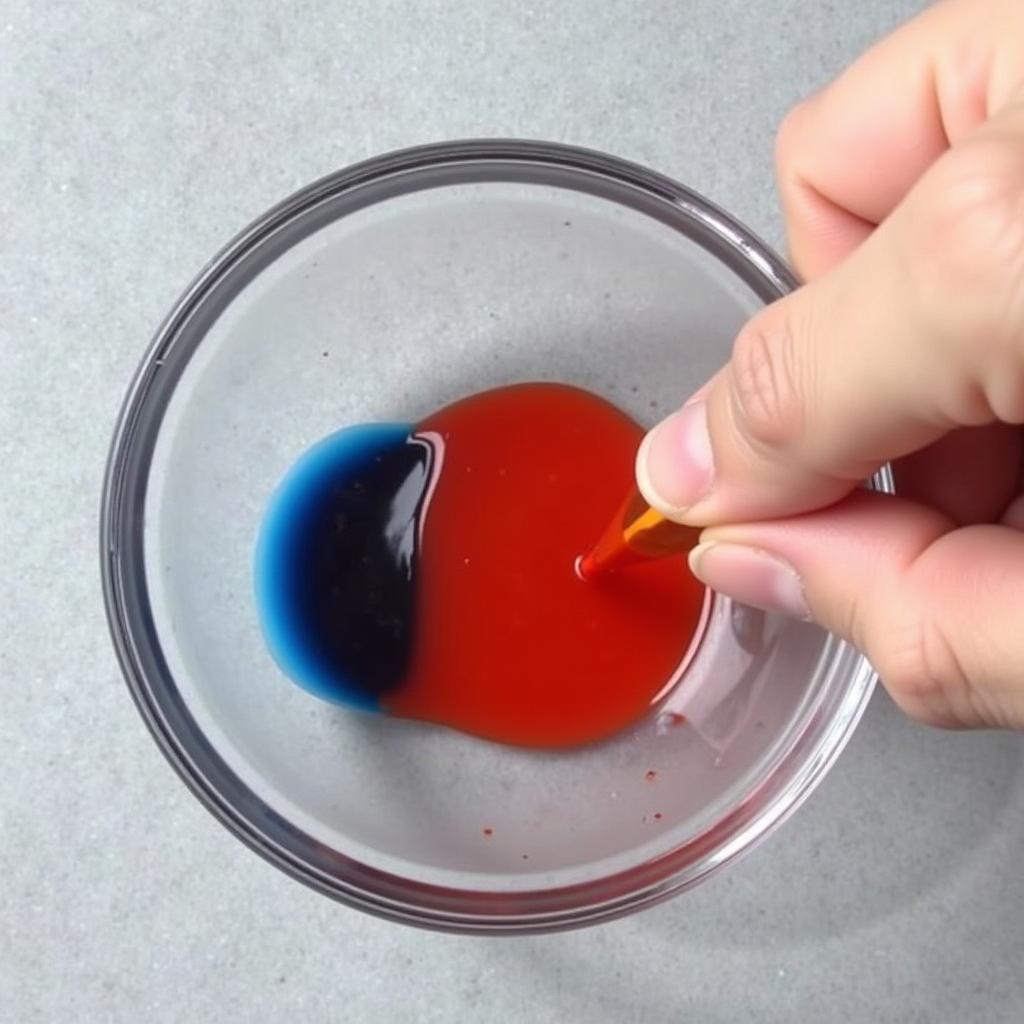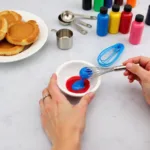Creating the perfect shade of orange for your culinary creations can be a delightful experiment. Whether you’re aiming for a vibrant sunset hue for your frosting or a gentle, peachy tint for your batter, knowing what color food coloring makes orange is essential. This guide will equip you with the knowledge to confidently mix your way to the perfect orange, every time.
Did you know that achieving a true orange isn’t about a single magical color? It’s about the harmonious blend of two primary colors: red and yellow. By understanding the interplay of these colors, you’ll unlock a spectrum of orange shades, from the softest apricot to the boldest tangerine. Let’s dive into the art of mixing orange food coloring! You can see what colors do you mix to get peach for similar color combinations.
Mastering the Art of Orange Food Coloring
The foundation of a beautiful orange lies in the balance of red and yellow. Think of it like a painter’s palette: more red will push your orange towards a warmer, reddish tone, while a greater proportion of yellow will create a lighter, yellower orange. It’s much like mixing paints to achieve the desired hue. You might be interested in how to make coral colored frosting for another vibrant color creation.
Achieving the Perfect Orange: A Step-by-Step Guide
- Start with a clean palette: Ensure your mixing surface and tools are free from any residual colors. This will prevent unwanted color contamination and ensure the purity of your orange.
- Begin with yellow: Add a small amount of yellow food coloring to your mixing bowl. Yellow serves as the base, and it’s easier to gradually add red for precise control.
- Introduce the red: Slowly incorporate red food coloring, a drop at a time, stirring constantly. Observe the color transformation with each addition. This gradual approach allows for precise adjustments.
- Adjust and refine: Continue adding small increments of red or yellow until you achieve the desired shade of orange. Remember, patience is key! The perfect orange might require several subtle adjustments.
Exploring Variations of Orange
Once you’ve grasped the fundamentals, you can explore a world of orange variations. Adding a touch of brown can create a deeper, more earthy orange, reminiscent of burnt sienna. Incorporating a small amount of pink can create a softer, pastel orange, ideal for delicate decorations. You can explore what food coloring makes brown to achieve a deeper hue.
What if I Only Have Red and Blue Food Coloring?
While red and yellow are the ideal combination, you can achieve a semblance of orange using red and a tiny amount of blue. Blue, when added sparingly to red, can darken it and create a hue that leans towards reddish-brown. However, this method is less precise and may not yield a true, vibrant orange.
 Mixing Red and Blue Food Coloring
Mixing Red and Blue Food Coloring
“When working with food coloring, always remember that less is more. Start with small amounts and gradually build up the color. This will give you better control and prevent over-saturation,” advises renowned pastry chef, Amelia Dubois.
Common Questions about Orange Food Coloring
What are the primary colors for making orange? Red and yellow are the primary colors used to create orange.
Can I use gel food coloring? Yes, gel food coloring works well for creating vibrant oranges.
Why is my orange turning brown? Adding too much red, or inadvertently introducing a contaminant, can make your orange appear brownish.
“Understanding the interplay of colors is crucial for any baker. Experimenting with different ratios of red and yellow will allow you to achieve a wide range of orange hues, unlocking a world of creative possibilities,” notes Amelia Dubois. If you’re considering using food coloring for hummingbirds, be sure to research its effects. Check out: does red food coloring harm hummingbirds?
Conclusion
Making orange with food coloring is a simple yet rewarding process. By mastering the balance of red and yellow, you can create a spectrum of orange hues to suit your culinary needs. Experiment, have fun, and enjoy the vibrant results! What colors go with tan clothes might give you inspiration for using your newly mixed orange creations.
FAQs
- What two colors make orange food coloring? Red and yellow.
- Can I make orange with red and blue food coloring? You can achieve a reddish-brown, but not a true orange.
- How do I make a light orange color with food coloring? Use more yellow than red.
- How do I make a dark orange color with food coloring? Use more red than yellow, or add a touch of brown.
- What happens if I add too much red food coloring? The orange will become more reddish and potentially brownish.
- Can I use natural food coloring to make orange? Yes, ingredients like carrot juice and turmeric can produce orange hues.
- How do I fix orange food coloring that is too dark? Add more yellow or white food coloring to lighten the shade.
Other questions and articles on our website:
- How to match colors in interior design?
- What are the trending colors for this season?
- Tips and tricks for using food coloring in baking.
For support, please contact us: Phone: 0373298888, Email: [email protected] or visit us at 86 Cau Giay, Hanoi. We have a 24/7 customer service team.
